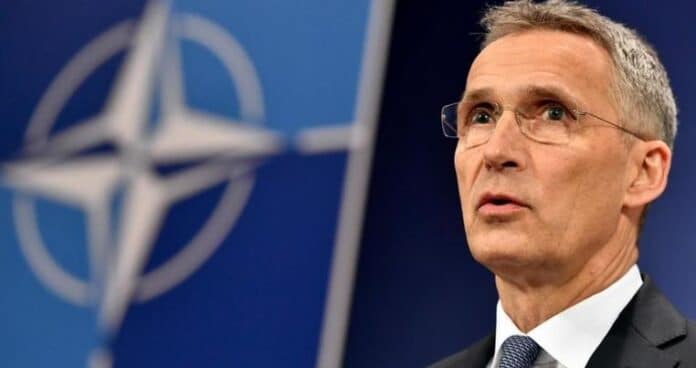The US, NATO, and other countries promised to increase support for Ukraine but rejected its appeal for no-fly zones. President Vladimir Zelenskiy requested the Western powers to enforce Ukraine no-fly zone amid the ongoing Russian aggression. The conflict resulted in an overnight fire at one of the country’s nuclear plants. The 30-nation military alliance said that such a move could provoke Russia to wage a widespread war across Europe. Secretary-General Jens Stoltenberg claimed that NATO wanted to prevent the war from going beyond Ukraine as it would cause more devastation and suffering.
The escalating war in Ukraine has reached its 10th day with Russian strikes getting more destructive, hitting residential areas and amassing civilian death toll. According to reports, 351 Ukrainians have died since Russian invasion began on 24 February 2022. Moreover, around 1.4 billion have fled the country. NATO accused Russia of using cluster bombs to attack Ukraine. These weapons are used to disperse smaller bombs in a large area to hit multiple targets at once. They are highly condemned due to the danger they pose to civilians as well. More than 100 countries have banned the use of cluster bombs excluding the US, Ukraine, and Russia.
Why Ukraine No-Fly Zone is Required?
A no-fly zone (NFZ) indicates that a certain aircraft cannot fly in a specific region. It is usually imposed within countries to protect sensitive areas like Bush Family Compound and Area 51 in the US. It can only be imposed by military means for surveillance, pre-emptive strikes, or taking down aircrafts that enter the region.
Establishing the Ukraine no-fly zone means that NATO forces would have to engage with any Russian aircraft spotted in the banned sky.
NATO Allows Russia to Continue Bombing
Russia’s invasion of Ukraine has sparked inspirational protests in the country. The civilians of Kherson gathered in front of Russian forces to defy occupation and their post-Soviet sovereignty. Kherson is the only big city Russia has taken till now. The country continues to appeal support from the world as NATO allies rejected to police Ukraine no-fly zone.
NATO warned that introducing a no-fly zone over Ukraine could lead to a full-fledged war involving multiple countries. Russian President Vladimir Putin also warned that any country playing a role in imposing a no-fly zone would be a part of the conflict.
Putin has no plans to declare martial law in Russia as there is no “external aggression”. It means that nobody has tried to stop Russia from invading Ukraine despite Putin’s subtle threats over time. Soon after launching attacks on Ukraine the Russian President has been saying that third parties would face the kind of consequences they have “never seen before” if they interfere. It has been widely viewed as a warning for NATO to not get militarily involved with Ukraine. NATO has also made it clear that it won’t do that and risk conflict with Russia which could escalate into nuclear war. Ukrainian President responded to inaction by saying that whoever died from this forward would die because of Western powers.
No-Fly Zones in the Past
Before rejecting the Ukraine no-fly zone, the West had policed the skies in several other circumstances.
In 1991, after Gulf War, the US and its allies (UK, France, etc.) established 2 no-fly zones in Iraq without UN’s backing to allegedly “protect Kurdish and Shiite minorities from airstrikes by Saddam Hussain’s government”. However, as time passed by, these NFZs became tools for Westerns allies to force Iraq into agreeing with coalition demands mostly related to the Status of the Nuclear Inspections. This escalation between the US and Iraq also led to 9/11.
In 1992, UN passed a resolution during the Bosnian War urging the member countries to enforce NFZ over Bosnia-Herzegovina. NATO promptly responded and commenced Operation Deny Flight to bar aircrafts of Serbia and its allies from entering in Bosnian airspace. The UNSC also approved an NFZ over Libya during the first Libyan Civil War in 2011. NATO quickly stepped forward to shoot down aerial aggressors and clear the way for humanitarian aid.
In both cases, NATO overpowered the aggressors as Bosnian and Libyan forces did not have any capacity to retaliate and attack beyond their own borders. However, it’s different with Russia. It would be difficult for the US and its allies to gain aerial superiority over Russia. The toll of engaging with battle-ready Russian warplanes would be much higher than expected.
Also Read


